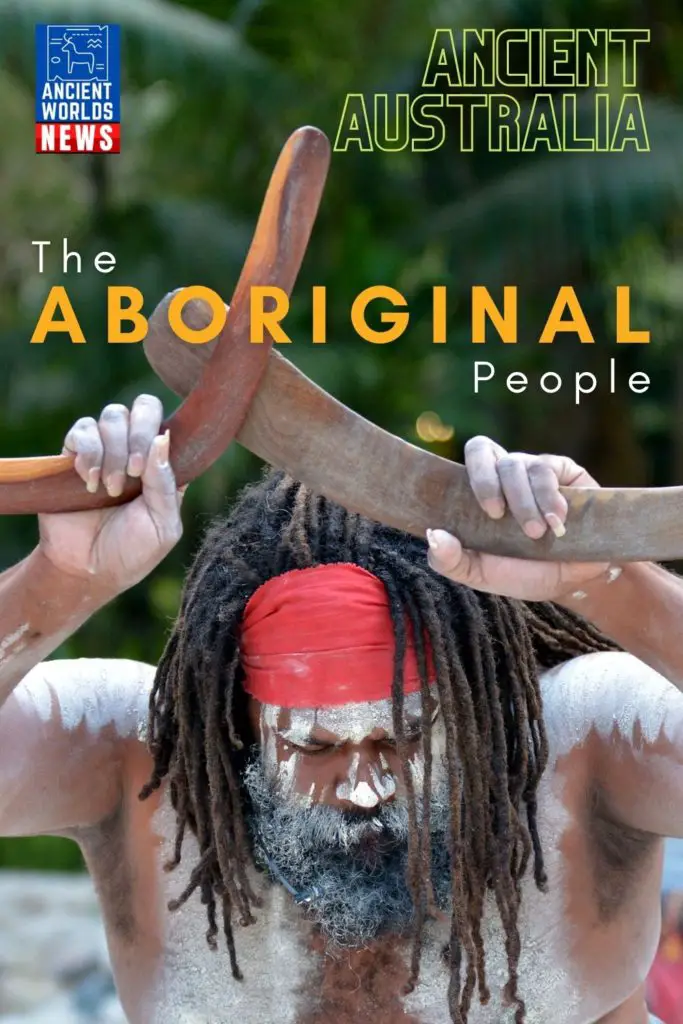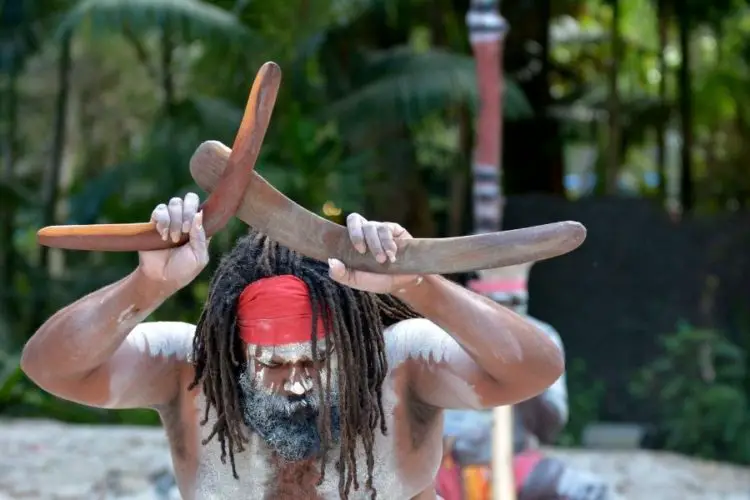The world is full of surprises, but finding remains in the ground will still always be surprising. No matter how much we learn, history never ceases to amaze. The more and more we dig into the ground, the deeper we go into the past. Wouldn’t it excite you to learn about who used to live where you are standing right now thousands of years ago, when the things you now see did not exist?

In Ancient Australia, Aboriginal people lived. There are not many written documents, but archaeologists have found evidence that there were people living there. Aboriginal is a term derived from Latin. It comes from the word “aborigines,” which means ab (from) and origo (origin). They are the people that have been here since the beginning of time – the earliest known people. The term was introduced in the English language in the 16th century. The term was then later used to describe both Aboriginal and Torres Strait Islanders. The term “Aborigine” is not used as it has been discarded by the people. Since the 1980s, the term “Indigenous Australians” has grown, but many Aboriginal people dislike it. They believe it removes their identity.
The other terms used are: “first nation,” first Australians, and “first peoples.” First Nations is the most common of these.
Aboriginal Australians
Aboriginal people include indigenous people from the various islands, such as Hinchinbrook Island, Tasmania, Fraser Island, etc. But they are excluded from Torres Strait Island. Aboriginal Australians and Torres Strait Islands both come under the term “Indigenous Australians.” The terms are used when both groups are being addressed. Torres Strait Islanders are different from Aboriginal people ethnically and culturally, but they show some similar cultural traits as well.
Aboriginal people are a large group that have developed over 50,000 years in Australia. Both groups share a very complex genetic history, as both groups were treated as one for 200 years. There has been a continuous change in the usage of the term “Aboriginal” according to time, place, family lineage, community acceptance, and self-identification. Aboriginal people lived on a larger portion of the area but were isolated from other groups. There are no written documents of this, which is why archaeologists find it hard to connect more dots. But there is some evidence that aboriginal people share genetic relation with Asians. But they were isolated from Asians a very long time ago.
Languages
Before the European settlement, there were 250 Aboriginal languages, which truly shows the diversity of the aboriginal groups. Aboriginal people were multilingual or bilingual, depending on the stretch of territory. Different language groups were referred to as “tribes” by Europeans. There were almost 500 groups that were named based on their languages. These groups were not associated with politics or the economy. The groups were divided based on languages; there was no unity based on shared ground. However, there was an understanding between communities as they shared some customs.
Large groups of Aboriginal people speak English with some aboriginal words mixed in, creating Australian Aboriginal English. The English language has also shaped Australian Aboriginal languages.
Origin
Ancestors of the aboriginal community migrated from Asia to Australia and have lived there for 45–50,000 years. The migration took place when sea levels were low. At this time, they could easily migrate without facing much difficulty. But, after some time, sea levels rose again, and large groups were isolated on different sections of the land. This is why even though the population shared similarities, they also had their differences.
Based on research of archaeological sites in the northern territory, scholars believe that humans arrived in Australia earlier, perhaps 65,000 to 80,000 years ago. The same scholars believed that the migration, which is wrongly concluded to be from Asia to Australia, actually happened from Asia to Europe. Other scholars question the early arrival of humans as the sand measurement does not show any sign of it. If there were early humans, then the artifacts would have been deeper in the ground. In both cases, the settlement would have taken place during low sea levels when there were extensive land bridges between Asia and Australia. To migrate from Asia to Australia, some kind of watercraft would have been used. Scholars confirm it as the oldest seafaring in the world. The sea levels rose again 13,500 to 8,000 years ago, isolating the Aboriginal groups from other communities. The Aboriginal people have permanently occupied the land since about some 10,000 years ago.
Complex Behavior
The analyses of the land show that Aboriginal people had some complex behaviors, which included cremation and trading. Cremation dates back 40,000 years; personal beautification with beaded jewelry started 30,000 years ago, and trading 10,000 years ago.
Aboriginal people domesticated dogs only 3–5,000 years ago. The dog was known as a dingo, and it was small in size. The domestication of the dingo came from southeast Asia to Australia. During these years, there were many important changes that took place in the lives of Aboriginal people. There was an increase in population, along with an improvement in social life. The market expanded too as more people were exchanging goods.
Uncertain Points
It is uncertain if there were multiple migrations in Australia, limiting the analyses of artifacts. The genetic evidence indicates that there were multiple donor groups. Even though it is certain only modern humans or “homo sapiens” have occupied Australia, archaeologists have also found two types of human skulls. Both skull types have different physical appearances. Scholars believe that there was a wide range of pre-European peoples. Some scholars even believe that one group used cosmetic cranial modification, which led to their different physical appearance.
Aboriginal people were hunter-gatherers who did not depend on farming or domesticated animals. They were solely dependent on nature to provide them food. But 21st-century scholars argue that Aboriginal people were associated with aquaculture and agriculture. In any case, Aboriginal people cannot be put into the nomadic category as they had a strong sense of attachment to land and areas. Feeding a large group of people meant having small food gatherings now and then. If the resources permitted, there were also large food gatherings where social and religious activities took place.
The Dreaming
The Aboriginal people believe in “the Dreaming” or “Dream time.” The idea represents past, present, future, and other aspects of life. It includes mythical stories such as when mythic beings came to the land and gifted it with flora, fauna, and human beings. According to the myth, the rules of social life were also set by these mythic creatures. When living things die, their physical body decays on Earth, and their spirit is taken to the spiritual realm.
According to Aboriginal beliefs, The Dreaming controls fertility and power on Earth. The power will shift to humans as long as they follow their original footprints, which includes regular ritualistic activities and the flow of life. Spirits communicated with humans and came down to Earth as messengers. Every time they visit Earth, they give new knowledge to humans. Humans can connect with spirits if they use their consciousness to gain strength from them. Belief in the Dreaming provided Aboriginal people with a strong sense of self and power within one. They have the confidence to cope with the physical world and control their social world.

